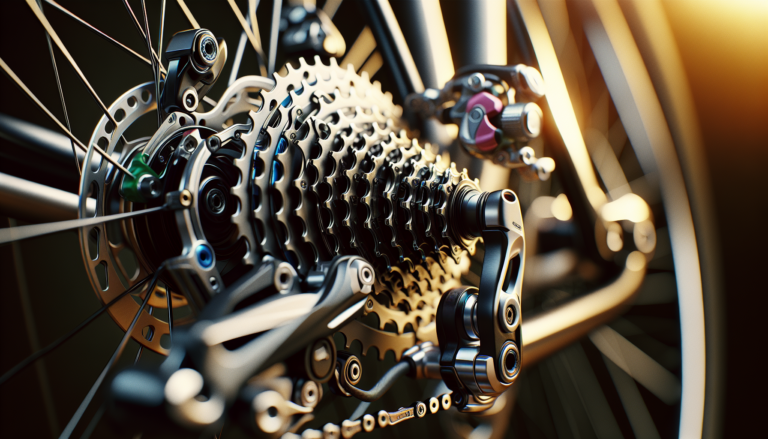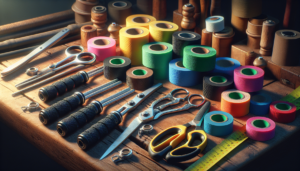Introduction to Indexing Bike Gears
Indexing bike gears is an essential skill for any cyclist looking to optimize their riding experience. Properly indexed gears ensure smooth, efficient shifting and allow riders to tackle various terrains with ease. Whether you’re a beginner or an experienced cyclist, understanding the importance of gear indexing and mastering the techniques involved will keep your bike running at its best.
What is Gear Indexing?
Gear indexing refers to the process of adjusting the components of a bike’s gear system to ensure precise and smooth shifting between gears. When gears are properly indexed, the chain moves smoothly from one cog to another, providing seamless transitions and optimal performance. Indexing involves fine-tuning the derailleur, cable tension, and limit screws to achieve perfect alignment and functionality.
Importance of Proper Gear Indexing
Properly indexed gears are crucial for several reasons:
- Smooth shifting: Indexed gears allow for effortless and precise shifts, eliminating hesitation or skipping.
- Efficient terrain handling: With well-indexed gears, cyclists can easily shift to the appropriate gear ratio for the terrain, maximizing pedaling efficiency and minimizing fatigue.
- Prolonged component life: Proper indexing reduces wear on the chain, cassette, and chainrings by ensuring the chain moves smoothly between gears.
Common Issues with Bike Gears
Even with regular maintenance, bike gears can develop issues that affect shifting performance. Recognizing and addressing these problems is essential for keeping your bike in top condition.
Identifying Gear Slipping
Gear slipping occurs when the chain fails to engage properly with the cassette or chainring, causing the pedals to spin without transferring power to the wheels. Symptoms of gear slipping include a sudden loss of resistance while pedaling, clicking noises, and the sensation of the chain “skipping” over the teeth of the gears. Slipping gears can be caused by worn components, improper cable tension, or misaligned derailleurs.
Inability to Shift into Certain Gears
If you find yourself unable to shift into specific gears, it may indicate an issue with the derailleur limit screws or cable tension. The high and low limit screws on the derailleur restrict its movement range, preventing the chain from overshooting the largest or smallest cogs. If these screws are misadjusted, the derailleur may not be able to reach certain gears. Alternatively, insufficient cable tension can also prevent the derailleur from moving the chain onto larger cogs.
Misalignment of Gears
Misaligned gears can cause the chain to rub against the front derailleur cage or shift inconsistently. This issue often stems from a bent derailleur hanger or improper derailleur positioning. A misaligned front derailleur can result in poor shifting performance and chain rubbing, while a misaligned rear derailleur may cause hesitation or difficulty shifting into certain gears. Realigning the derailleurs is necessary to restore smooth shifting.
Key Components of the Gear System
To effectively index your bike gears, it’s important to understand the key components involved in the shifting process.
Understanding the Derailleur System
The derailleur system is responsible for moving the chain between gears. It consists of two main components:
| Component | Function |
|---|---|
| Front Derailleur | Shifts the chain between the front chainrings |
| Rear Derailleur | Moves the chain across the rear cassette cogs |
The derailleurs are controlled by shift cables that are actuated by the shifters on the handlebars. As you click the shifters, the cable tension changes, causing the derailleurs to move the chain to the desired gear.
Role of Jockey Wheels
Jockey wheels are the small pulleys located on the rear derailleur. Their primary function is to maintain constant tension on the chain as it moves through the gear range. The jockey wheels guide the chain smoothly onto the cassette cogs, enabling precise and responsive shifts. Properly lubricated and aligned jockey wheels are essential for optimal shifting performance.
Function of Limit Screws
Limit screws are small adjustable screws found on both the front and rear derailleurs. They serve two important functions:
- Restricting the derailleur’s range of motion, preventing the chain from overshift ing beyond the largest or smallest cogs.
- Ensuring the derailleur aligns properly with each gear for smooth, precise shifts.
The high limit screw controls the derailleur’s position when shifted to the smallest cog, while the low limit screw sets the position for the largest cog. Proper adjustment of these screws is crucial for accurate gear indexing.
Cable Tension Adjuster
The cable tension adjuster, also known as a barrel adjuster, is a small cylindrical component located inline with the shift cable housing. Its purpose is to fine-tune the cable tension without the need to readjust the cable anchor bolt. By turning the adjuster clockwise or counterclockwise, you can increase or decrease the cable tension, respectively. This micro-adjustment capability is essential for achieving precise gear indexing and accommodating cable stretch over time.
Tools Needed for Gear Indexing
To properly index your bike gears, you’ll need a few essential tools. Having these tools on hand will make the process more efficient and effective.
Essential Tools for Gear Adjustment
- Hex keys (Allen wrenches): Used to adjust limit screws and cable anchor bolts.
- Phillips and flat-head screwdrivers: Useful for adjusting derailleur positioning and cable tension.
- Cable cutters: Required for trimming excess cable after adjustments.
- Pliers: Helpful for pulling and holding cables during adjustments.
- Torque wrench: Ensures proper tightening of bolts to manufacturer-specified torque values.
Using a Bike Stand
While not strictly necessary, a bike stand is highly recommended for gear indexing. A stand elevates the bike, allowing you to work comfortably and spin the pedals and wheels freely. This makes it easier to observe the shifting process and make precise adjustments. If you don’t have a stand, you can flip the bike upside down, resting it on the saddle and handlebars.
Chain Lubrication and Cleaning
Before beginning the indexing process, it’s important to ensure your chain is clean and properly lubricated. A dirty or dry chain can cause poor shifting performance and accelerate wear on the drivetrain components. Use a degreaser to clean the chain, cassette, and chainrings. Once clean, apply a high-quality bike chain lubricant, wiping off any excess to prevent attracting dirt.
Step-by-Step Guide to Indexing Bike Gears
With an understanding of the key components and necessary tools, you’re ready to begin indexing your bike gears. Follow this step-by-step guide for optimal results.
Preparation Before Adjustments
Before diving into the indexing process, take a few preparatory steps:
- Clean the drivetrain components (chain, cassette, chainrings) with a degreaser and re-lubricate the chain.
- Check the condition of the chain and cables. Replace them if they show signs of excessive wear or fraying.
- Mount the bike on a stand or flip it upside down for easy access to the gears.
Adjusting the Rear Derailleur
Start by adjusting the rear derailleur, as it is responsible for the majority of gear shifts.
- Shift the chain to the smallest cog on the rear cassette.
- Loosen the cable anchor bolt and detach the shift cable.
- Adjust the high limit screw so the derailleur aligns with the smallest cog.
- Reattach the shift cable, ensuring it has slight tension, and tighten the anchor bolt.
- Shift through the gears, observing the chain’s movement. If the chain hesitates or skips, turn the barrel adjuster counterclockwise to increase cable tension.
- Fine-tune the indexing using the barrel adjuster until the chain shifts smoothly across all cogs.
- Adjust the low limit screw to prevent the chain from overshifting beyond the largest cog.
Adjusting the Front Derailleur
Once the rear derailleur is indexed, move on to the front derailleur.
- Shift the chain to the smallest chainring.
- Check the height and angle of the front derailleur cage. It should clear the largest chainring by 1-2 mm.
- Adjust the low limit screw so the derailleur cage aligns with the smallest chainring.
- Shift to the largest chainring and adjust the high limit screw to prevent overshifting.
- Shift through the front gears, fine-tuning the cable tension with the barrel adjuster if necessary.
Fine-Tuning with Barrel Adjuster
After the initial adjustments, ride the bike and observe the shifting performance. If you notice any hesitation or imprecise shifts, use the barrel adjuster to fine-tune the cable tension. Turn it counterclockwise to increase tension and clockwise to decrease tension. Make small adjustments, about a quarter turn at a time, until the shifting feels crisp and responsive.
Regular Maintenance for Optimal Performance
Indexing your bike gears is not a one-time task. Regular maintenance is essential to keep your gears shifting smoothly and efficiently.
Routine Checks and Adjustments
Incorporate gear indexing into your regular bike maintenance routine. Check the shifting performance before each ride and make minor adjustments as needed. Look for signs of cable stretch, derailleur misalignment, or worn components. Addressing these issues promptly will prevent more serious problems from developing.
When to Consult a Professional
While gear indexing is a skill that most cyclists can learn, there may be instances where professional assistance is necessary. If you encounter any of the following issues, consider taking your bike to a qualified mechanic:
- Persistent shifting problems that do not improve with adjustments
- Bent or damaged derailleur components
- Difficulty diagnosing the cause of poor shifting performance
- Lack of confidence in your ability to make the necessary adjustments
Learning Resources and Community Support
If you’re new to gear indexing or encounter challenges along the way, there are numerous resources available to help you improve your skills and troubleshoot issues.
Online Forums and Communities
Engage with online cycling forums and communities to connect with experienced riders and mechanics. These platforms provide a wealth of knowledge and allow you to ask questions, share experiences, and learn from others. Popular forums include BikeForums.net, CyclingNews.com, and Reddit’s r/bikewrench subreddit. Don’t hesitate to reach out for guidance or advice when needed.
Video Tutorials and Guides
Visual learners can benefit greatly from video tutorials and guides on gear indexing. Websites like YouTube and Park Tool offer comprehensive video demonstrations that walk you through the indexing process step-by-step. Seeing the techniques in action can help clarify the concepts and provide valuable tips for success. Be sure to follow along with the videos using your own bike to reinforce the learning experience.






